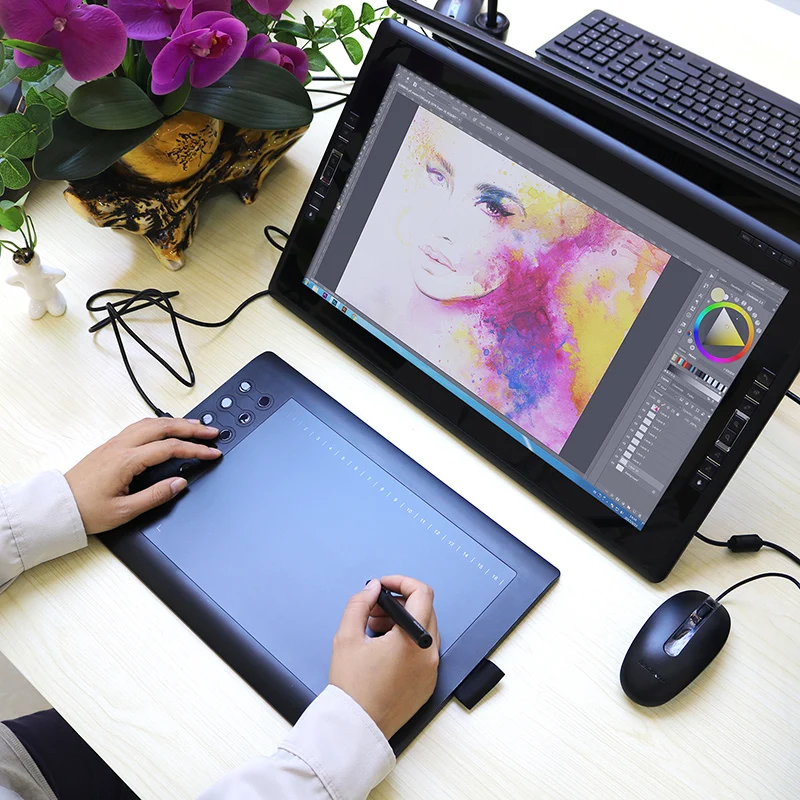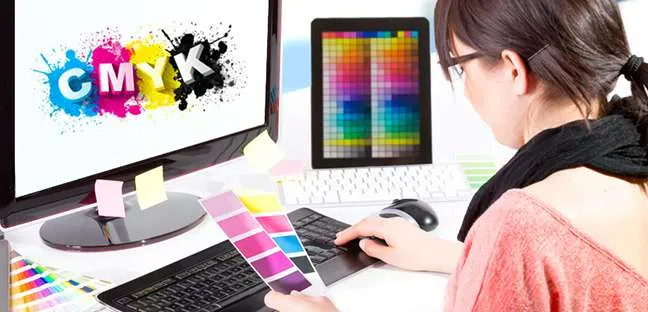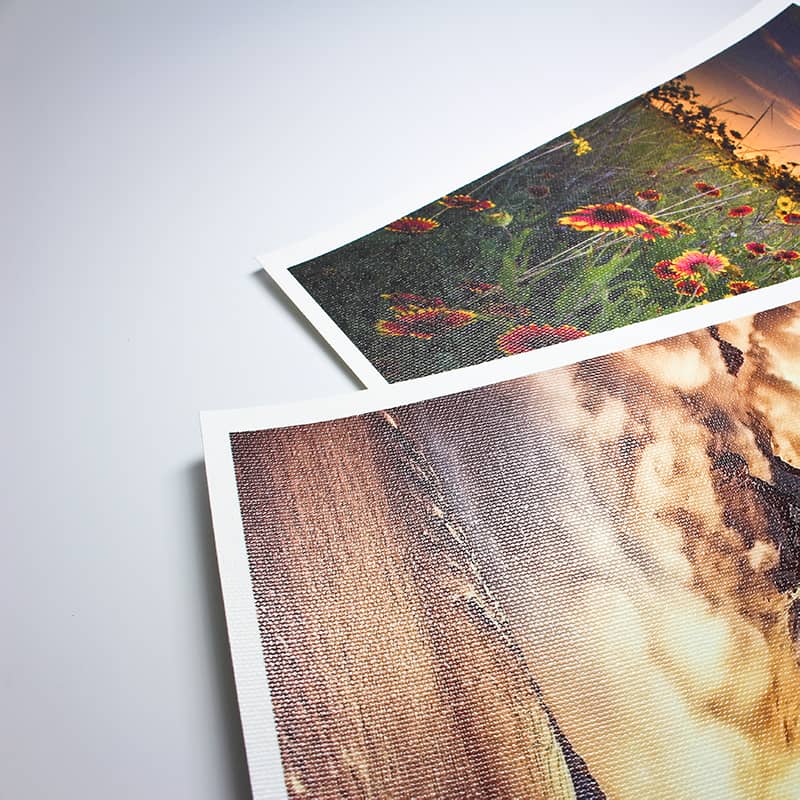
The digital art has opened a world of possibilities for artists. Gone are the days of limitations imposed by traditional mediums. Artists today have excellent tools at their fingertips. They can create colorful landscapes on a tablet and complex designs with a stylus.
Introduction
Do you dream of your creations leaping off the screen and becoming real? Are you fascinated by printing your digital art?
Our comprehensive guide is here to help! It delves into the process of turning your digital art masterpieces into tangible treasures.
A Bridge Between Pixels and Paper: Understanding Digital Art Printing

Digital art printing allows you to print your crafted creations on physical surfaces. This process will enable you to appreciate your work in a new light. It also lets you share it with the world in a way that transcends the limitations of the digital realm.
Imagine the thrill of seeing your intricate digital illustration adorn a gallery wall. Picture the joy of gifting a vibrant digital portrait printed on canvas to a loved one. Digital art printing opens doors to a multitude of possibilities, allowing you to:
Expand your audience:
By offering physical prints of your artwork, you reach a wider audience. They may engage with something other than digital art forms, expanding your artistic reach and potential customer base.
Enhance your portfolio:
Physical prints add a tangible dimension to your portfolio. They showcase your work professionally and impressively. Potential clients or collaborators can appreciate the details of your creations firsthand and experience the vibrancy of your work in person.
Turn passion into profit:
Printing digital art through various marketplaces and print-on-demand services is a great opportunity. It allows you to monetize your creativity. You can sell your artwork as prints, merchandise, or even limited editions, creating a sustainable income from your artistic endeavors.
Preserve your creations:
Physical prints serve as a lasting testament to your digital art. They offer a sense of permanence. Digital files, susceptible to hardware failure or software updates, may lack it.
Choosing the Right Technique: A Match Made in Printmaking Heaven

The success of your print lies in selecting the optimal printing technique. Each method boasts unique strengths and caters to specific artistic styles. Here, we unveil the secrets of four prominent printing techniques for digital art:
Direct-to-Garment (DTG) Printing:
You can print your artwork directly onto fabrics!
Fabrics like t-shirts, tote bags, or even phone cases use this innovative technique. DTG excels in reproducing intricate designs with vibrant colors. These colors seamlessly blend with the fabric. It is ideal for artists working in graphic design, pop art, or bold, illustrative styles.
Giclée Printing:
Giclée printing is famous for its attention to detail and exceptional color accuracy. Consider it the gold standard for high-quality art reproduction. This technique utilizes archival-quality inks and paper. The result is prints that rival traditional paintings’ longevity and vibrancy. Giclée printing is perfect for artists with detailed digital paintings. It’s also ideal for portraits or landscapes.
Screen Printing:
This versatile technique uses a stencil or screen to apply layers of ink to a surface. Screen printing produces bold, vibrant colors. It can be used on various materials, including fabric, wood, and metal. It’s famous for artists with minimalist designs. They often use bold typography or produce limited-edition prints on diverse surfaces.
Laser and Inkjet Printing:
These are two of the most common printing methods in many homes and offices. Laser printers excel in producing crisp text and lines. Inkjet printers offer superior color control and are better suited for art prints. Consider investing in a high-quality inkjet printer. It should have pigment-based inks for color fidelity and longevity of your art prints.
Preparing Your Digital Files for a Flawless Print:

Crucial preparation is necessary before printing your digital masterpiece to the printer. It would be beneficial to ensure you’ve completed it. Here’s a roadmap to ensure a flawless transition from pixels to print:
Resolution:
Resolution refers to the number of pixels per inch (dpi) used to create your artwork. Higher resolutions translate to sharper prints. For professional results, aim for at least 300 dpi.
Color Management:
Color management ensures that the colors in your digital file translate accurately, ensuring consistency between the digital and printed versions. This involves calibrating your monitor and understanding color profiles. CMYK and RGB are two of these profiles. CMYK is used for printing, and RGB is used for digital displays.
File Format:
Save your artwork in a format suitable for printing. JPEGs are an excellent choice for basic prints. But, consider using TIFF files for high-quality, detailed work.
The Printing Process: Unleashing Your Digital Masterpiece

Now that your digital files are ready, it’s time to breathe life into your creation. Let’s delve into the printing process:
Choosing a Printing Service:
You can invest in a high-quality home-based printer or a professional printing service. Professional services offer a more comprehensive range of printing options and high-quality materials. This ensures exceptional results. When selecting a printing service, consider factors like:
- Printing technique capabilities,
- Turnaround time,
- Pricing,
- Customer service.
These elements play crucial roles in determining the best choice for your needs.
Print on Demand (POD):
A print-on-demand service is a convenient option for artists. It allows them to avoid managing inventory. You can upload your artwork and select from various product options. These options include prints, canvas wraps, or phone cases. They handle printing, fulfillment, and shipping, taking the burden off your shoulders.
Selecting the Perfect Paper or Canvas:

The choice of paper or canvas significantly impacts your print’s final look and feel. Explore a variety of options to match your artistic vision:
Fine Art Paper:
For a timeless, gallery-worthy presentation, opt for archival-quality, acid-free paper. Different textures offer unique aesthetics. Smooth textures provide crisp details, while watercolor paper creates a softer, textured look.
Canvas:
Canvas adds a touch of texture and depth to your artwork, creating a museum-quality feel. Depending on your desired outcome, choose from various weights and textures. Consider textured canvas for abstract or impressionistic pieces, or opt for smooth canvas for detailed illustrations.
Alternative Materials:
Unleash your creativity by exploring nontraditional materials like metal, acrylic, or wood. These options add a unique, contemporary touch to your art prints and are ideal for artists seeking to push boundaries.
Color Calibration and Ink Longevity:

Color plays a pivotal role in bringing your digital artwork to life. Here are some key considerations:
Color Calibration:
For optimal results, calibrate your printer regularly to ensure accurate color reproduction. This ensures that the colors on your screen translate faithfully. They translate to the printed artwork.
Ink Longevity:
Choose inks that focus on longevity over vibrancy. Pigment-based inks offer superior colorfastness. This means your prints resist fading from sunlight or exposure over time.
Selling Your Printed Art: Turning Passion into Profit

Once you’ve mastered printing your digital creations, a world of opportunity awaits. Here are some tips to help you sell your printed artwork:
Build Your Brand:
Develop a strong artist brand that reflects your unique style and artistic vision. Create an online presence showcasing your work. Connect with potential customers through social media or your website.
Set Strategic Prices:
Research the market and your target audience to determine a competitive price range. When setting prices, consider factors like production costs, printing technique, and material quality.
High-Quality Presentation:
Invest in professional product photography to showcase your prints. It will present them in the best possible light. This will attract potential buyers and create a polished brand image.
Marketing and Promotion:
Use various marketing channels to reach your audience. Promote your artwork on social media. Attend art shows or local events, and consider online marketplaces. Collaborations with galleries are also a great idea.
Limited Editions:
Consider offering limited edition prints. This can increase their perceived value and appeal to collectors. It caters to those who appreciate exclusivity and can add a premium to the price.
Beyond the Basics: Advanced Techniques and Considerations
Here are some advanced concepts that will enhance your knowledge as you venture deeper into printing digital art.
Color Gamut:
Understanding the color gamut of your chosen printing technique and paper is crucial. It helps determine the range of colors accurately reproduced in your artwork.
Image Sharpening:
Unsharp masking is a technique that can enhance the sharpness of your artwork. It’s particularly effective when printed on larger formats.
Digital Proofing:
Consider utilizing digital proofing services offered by some printing houses. Before committing to a large print run, do a test run first. This can help ensure accuracy and quality before proceeding with the full production. These services allow you to review a digital representation of the final print. This ensures accuracy.
Calibration Tools:
Invest in hardware calibration tools for your monitor. This ensures consistent color reproduction throughout your workflow.
Conclusion: A World of Possibilities Awaits
The digital landscape is dynamic and competitive, demanding adaptability and innovation from artists. Success requires dedication, perseverance, and continuous learning.
Furthermore, commercialization raises concerns about authenticity and artistic integrity. Artists must remain vigilant in preserving their unique voice and vision while navigating the market demands. Balancing creative fulfillment with commercial viability requires careful consideration.
The journey from digital to physical, from niche to mainstream, and from passion to profit is complex. It’s filled with excitement, challenges, and endless possibilities. As artists explore and innovate, they enrich their lives and contribute to the tapestry of human creativity. Let us embrace this journey, seizing opportunities to bring our digital dreams to life and share our artistic passions with the world.